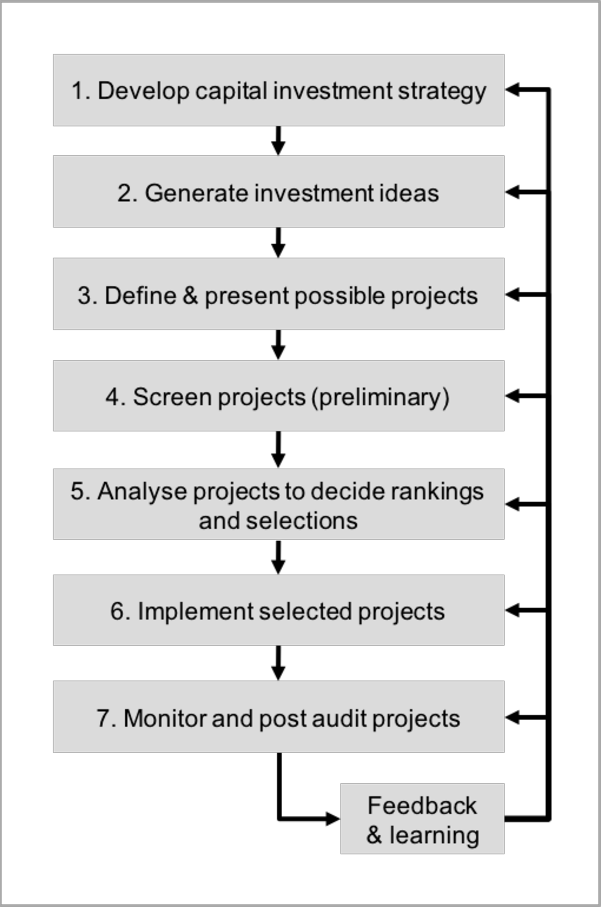Contents:


The standard number for a safe or even great PEG ratio varies from one industry to the next, but as a rule of thumb, a PEG of below 1 is best. When a PEG ratio is 1 on the dot, the market’s perceived value of the stock is in balance with what you can expect of its future earnings growth. In contrast, Morningstar uses the “mean EPS estimate for the current fiscal year” for the earnings number. Because Apple is expected to grow over the next year, Morningstar’s inputs result in a lower PEG ratio. In doing so, it avoids the need to use estimates for either factor. The result is a higher PEG ratio for any company that is expected to grow significantly over the next year.
While the P/E ratio is more commonly used by investors, the PEG ratio improves upon the P/E by incorporating earnings growth estimates. This provides a fuller picture of a company’s relative value in the market. However, because it relies on earnings estimates, having good estimates is key. A bad forecast or assumption, or naively projecting historical growth rates into the future, can produce unreliable PEG ratios.
- Most analysts use 12-month trailing earnings to calculate the bottom part of the P/E ratio.
- Compare the PEG ratio to the price-to-earnings ratio (P/E ratio), a related measure that evaluates how expensive a stock is by comparing the company’s stock price to its earnings.
- The calculation also can be based on either historical or projected earnings.
- When traders realize that their hopes were too high, which had led stock prices to rise too high, those bubbles burst with sudden stock crashes.
Forward earnings or future earnings are based on the opinions ofWall Streetanalysts. Analysts can be overoptimistic in their assumptions during periods of economic expansion and overly pessimistic during times of economic contraction. One-time adjustments such as the sale of a subsidiary could inflate earnings in the short term. This complicates the predictions of future earnings since the influx of cash from the sale would not be a sustainable contributor to earnings in the long term. Although forward earnings can be useful, they are prone to inaccuracies. The price/earnings to growth ratio is a very powerful investment metric to help you form your investment decisions.
A negative PEG can result from either negative earnings , or a negative estimated growth rate. The degree to which a PEG ratio result indicates an over or underpriced stock varies by industry and by company type. As a broad rule of thumb, some investors feel that a PEG ratio below one is desirable.
Once you have the P/E, you simply divide that by the growth in earnings per share to arrive at the PEG ratio. EPS is a metric used by investors to evaluate a company’s profitability on a per-share basis. In essence, EPS is determined by dividing a company’s earnings by its total number of shares outstanding. However, there are several ways to calculate EPS, including basic and diluted.
Analysis
This makes it easier to compare different industries, which tend to each have their own historical P/E ranges. For example, here’s a look at the relative valuation of a biotech stock and an integrated oil company. PEG aims to value the company based on what it produces and adjust that for the growth of the company. Since companies’ earnings and growth potential vary greatly among industries, there isn’t a standard number that indicates a good or bad investment.

Many investors may look at Company A and find it more attractive since it has a lower P/E ratio among the two companies. But compared to Company B, it doesn’t have a high enough growth rate to justify its current P/E. Company B is trading at a discount to its growth rate and investors purchasing it are paying less per unit of earnings growth. Based on its lower PEG, Company B may be relatively the better buy.
In that case, the former would be a more reasonable investment avenue. Volatility profiles based on trailing-three-year calculations of the standard deviation of service investment returns. It’s worth remembering that earnings forecasts are less accurate over a longer time, so next year’s earnings consensus should be closer to actual earnings than the five-year forecast. The PEG ratio is particularly useful when looking at fast-growing companies. Many or all of the offers on this site are from companies from which Insider receives compensation .
Using the Price-to-Earnings Ratio and PEG to Assess a Stock
While a low P/E ratio may make a stock look like a good buy, factoring in the company’s growth rate to get the stock’s PEG ratio may tell a different story. The lower the PEG ratio, the more the stock may be undervalued given its future earnings expectations. Adding a company’s expected growth into the ratio helps to adjust the result for companies that may have a high growth rate and a high P/E ratio. Consider the scenario of an energy utility that has little potential for earnings growth. Analyst estimates may be five percent growth, at best, but there is solid cash flow coming from years of consistent revenue. The company is now mainly in the business of returning cash to shareholders.
5 Promising Price-to-Book Value Stocks to Buy in 2023 – Nasdaq
5 Promising Price-to-Book Value Stocks to Buy in 2023.
Posted: Tue, 17 Jan 2023 08:00:00 GMT [source]
When a stock or index falls, it can be a buying opportunity using this strategy. In looking at the PEG ratio, we’ll discuss how to calculate it, give an example of how it’s used, and examine the best uses for the PEG ratio. Our FTE Calculator calculates how many full-time equivalent employees are on your team. To the best of our knowledge, all content is accurate as of the date posted, though offers contained herein may no longer be available. The opinions expressed are the author’s alone and have not been provided, approved, or otherwise endorsed by our partners. If we were to rely solely on the P/E ratio, each company would have a P/E ratio of 10.0x.
PEG Ratio vs P/E Ratio
The PEG ratio is a good way to value a stock while taking its growth rate into account, and investors should be familiar with how the PEG ratio formula works. Like any of the popular valuation ratios, it shouldn’t be used as a one-off test to decide whether to buy a stock or not. It’s important to understand things like a company’s competitive advantage, its addressable market, and its long-term growth prospects. The price-to-earnings ratio of a stock can generally be found on a stock market portal like Yahoo! Finance or from your brokerage. Expected growth rates, which are generally determined by Wall Street analysts unless a company has given its own guidance, can likely be found with your brokerage. You may have to do some calculations to determine the growth rate based on the earnings forecasts available.

From those assumptions, how to calculate peg ratio A is our base case, Company B is our upside case (i.e. high growth), and Company C is our downside case (i.e. low growth). Moderate Co has a price of $146.12, 2018 EPS of $11.43, and 2019 EPS of $13.25. A PEG ratio is both grounded in objective information and is forward-looking – a factor that lends more credibility to the metric. Investopedia requires writers to use primary sources to support their work. These include white papers, government data, original reporting, and interviews with industry experts. We also reference original research from other reputable publishers where appropriate.
However, there are a few things that are important for you to keep in mind. In effect, investors can use the ratio to make more well-informed decisions on whether the market valuation of a stock is currently undervalued or overvalued. Regardless of what type of growth rate you use in your PEG ratios, what matters most is that you apply the same method to all the stocks you look at to ensure that your comparisons are accurate.
This method takes into consideration the historical growth rates of the company. This growth rate can be calculated by taking last year’s growth numbers to some average of the last few years’ performances. Though the stock prices of company Y seem to be more attractive, investors may still be doubtful, given the difference in the growth rate of the two companies. Therefore, the investor decides to go with company X stocks as the ratio signified fair pricing, and even the growth rate shows that stock value is justified and reliable.
While the ratio helps adjust for growth over a period of time, it typically only takes into account a short time period, such as 1-3 years. For this reason, one or two years of high growth may overstate the benefit of buying the faster-growing company. The sustainable growth rate is the maximum rate of growth that a company can sustain without raising additional equity or taking on new debt. According to Peter Lynch, an eminent financial and value investor, a PEG ratio of 1 denotes equilibrium. This equilibrium is between the perceived value of a stock’s worth and its earning potential.
Timothy has helped provide CEOs and CFOs with deep-dive analytics, providing beautiful stories behind the numbers, graphs, and financial models. Investors must always keep in mind that the market can, in the short-term, be anything but rational and efficient. While in the long run stocks may be constantly heading toward their natural PEGs of one, short-term fears or greed in the markets may put fundamental concerns on the backburner. The enterprising investor may want to experiment with calculating PEG ratios across a range of earnings scenarios based on the available data and his or her own conclusions. When traders as a whole become too optimistic, the result is a stock market bubble.
For example, suppose that XYZ Company’s P/E ratio is 20, and its expected growth rate is 35 over the next year, meaning that its PEG ratio is .57 (20 P/E ÷ 35 growth rate). Conversely, suppose that ABC Company has a P/E of 15, making it more attractive than XYZ from purely a P/E valuation. However, ABC’s expected growth rate is 10 for the next year, making its PEG ratio 1.5 (15 P/E ÷ 10 growth rate).
Tesla Approaches Being A Peter Lynch Stock (NASDAQ:TSLA) – Seeking Alpha
Tesla Approaches Being A Peter Lynch Stock (NASDAQ:TSLA).
Posted: Mon, 06 Feb 2023 08:00:00 GMT [source]
The PEG ratio is a form of the P/E ratio, which tells you how much investors are willing to pay for each $1 in company earnings. Dividends will throw off the PEG ratio, so there is a slightly altered formula you can use for stocks that issue dividends. PEG ratios higher than 1 are generally considered overvalued, while those less than 1 are seen as undervalued.
Furthermore, we will also show you some examples to help you understand the PEG ratio meaning and what a good PEG ratio is. But first, let’s make sure we understand the concept of this metric. Get instant access to video lessons taught by experienced investment bankers.
When the ratio is greater than one, it indicates that the stock is overvalued as the growth expectations are very much high. On the other hand, if the ratio is less than one, it would mean that the stock is undervalued as the growth expectations are very less. It helps the investors to compare the stocks of companies that have different levels of growth rates.
The P/E ratio helps investors determine the market value of a stock as compared to the company’s earnings. In short, the P/E shows what the market is willing to pay today for a stock based on its past or future earnings. A high P/E ratio could mean that a stock’s price is high relative to earnings and possibly overvalued. Conversely, a low P/E ratio might indicate that the current stock price is low relative to earnings.
As a general rule of thumb, if a company’s PEG ratio exceeds 1.0x, the stock is considered to be overvalued, whereas a company with a PEG of less than 1.0x is considered to be undervalued. The PEG formula consists of calculating the P/E ratio and then dividing it by the long-term expected EPS growth rate for the next couple of years. The price/earnings-to-growth ratio addresses one of the primary weaknesses of the price-to-earnings (P/E) ratio, which is the lack of consideration for future growth.
Fast Co, therefore, has a P/E of 27.0x, which divided by its growth rate of 50, results in a PEG ratio of 0.54. PEG ratios will vary by industry and company type, so there is no universal standard for PEG ratios that determine whether a stock is under or overpriced. In case the PEG ratio of any stock is below 1, it means that the market has underestimated its value in relation to its projected earning potential. The P/E ratio denotes the rupee amount a shareholder needs to pay for a particular stock for earning Re.
The potential disadvantage is that past earnings may not reflect the company’s future prospects. Fundamental analysis of stocks to determine their actual value is a common practice amongst investors. While the process might sound daunting, some metrics facilitate the purpose conveniently. However, it has a lesser-known and more useful cousin that facilitates a greater understanding of a stock’s real value, and that is the PEG ratio. Price To Cash Flow MultiplePrice to Cash Flow Ratio is a value indicator that measures a company’s stock price in relation to the cash flow amount it generates. This is determined as the ratio of Price Per Share to Operating Cash Flow Per Share.
If a company trades at a low PEG ratio, it could be because the market doesn’t believe the growth forecast. Additionally, since the number of years in the PEG ratio can vary, apples-to-apples comparisons can be difficult. In the example of Meta, analysts expect earnings per share to decline this year, which means it wouldn’t even have a PEG ratio if we were just using a one-year forecast. By contrast, over the next three years, the PEG ratio would be just 0.86, much lower than the current 1.74. Although ABC has a lower price-to-earnings multiple, its lower growth rate may indicate that its stock price is overvalued compared to its expected growth over the next year. On the other hand, XYZ’s higher P/E ratio might be justified, since the company has a much higher expected growth rate.
